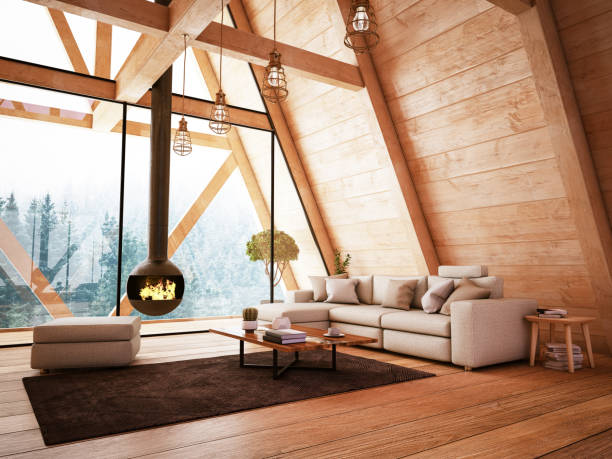The environment’s long-term viability has become a worldwide concern. Countries and corporations are becoming more conscious of the harm they create and are seeking ways to reduce it. Environmentally harmful construction methods and materials have sparked interest in developing environmentally friendly techniques and materials. Wooden construction is essential for long-term sustainability and environmental protection. Wood is a renewable resource that can help build a more sustainable construction in the future.

Wood as a sustainable construction material
Because wood is associated with deforestation, it may be difficult to consider it a sustainable material. Using wood instead of steel or concrete has a lower environmental impact as well as lower construction and operating costs.
Wood is a versatile organic material that is also the only renewable building material for eco-friendly construction. Certain properties of wooden structures make them durable and strong. Wood, when properly treated, can be a dependable construction material with long service life.
Benefits of wooden construction
Wood does not expand significantly when heated. Insulation is also provided by the combination of low thermal conductivity and high specific heat.
Depending on its orientation, wood can either amplify or dampen sound. Sound travels along the grain direction and is reduced in the perpendicular direction.
Dry wood is a good electrical insulator and does not collect static electricity. It is important to note, however, that the electrical resistance of wood is inversely proportional to its moisture content.
Wood is extremely strong and long-lasting. It also has a long breaking length, which is the length at which a material breaks under its own weight when suspended.
Wood is thought to be warm, rustic, and decorative. It also comes in a variety of colors, shapes, smells, and textures. To achieve the desired finishes, wood can be painted. With this level of adaptability, this material is also an excellent choice for creating outdoor furniture for the interior of your home. Simple wood projects, whether for decor or practical use, can be built by a DIY enthusiast.
Wood, unlike metals, does not rust and can be repaired and maintained. Although old wood can be restored, the process can be costly.
Wooden construction fire safety
One of the most common arguments against wood as a suitable building material is that it is easily damaged by fire. However, most wood-building contractors use Cross-Laminated Timber, or CLT, which behaves more like concrete than wood. CLT is harvested from sustainably managed forests and prefabricated into highly durable, long-lasting wood panels with excellent fire resistance.
CLT chars slowly and predictably, rather than quickly burning and disintegrating, giving occupants more time to plan an emergency exit strategy. Overall, timber is a particularly appealing option for environmentally friendly construction. Timber is much more energy efficient, uses less water, and has a lower carbon footprint than other woods.
Wood is an important part of our environment because it consistently meets our needs and is always willing to do more. We can continue to foster a mutually beneficial relationship between ourselves and our forests by implementing sustainable building practices. The more environmentally conscious we are in all aspects of our lives (including construction), the easier it will be for our most valuable resources to continue to grow and thrive.
